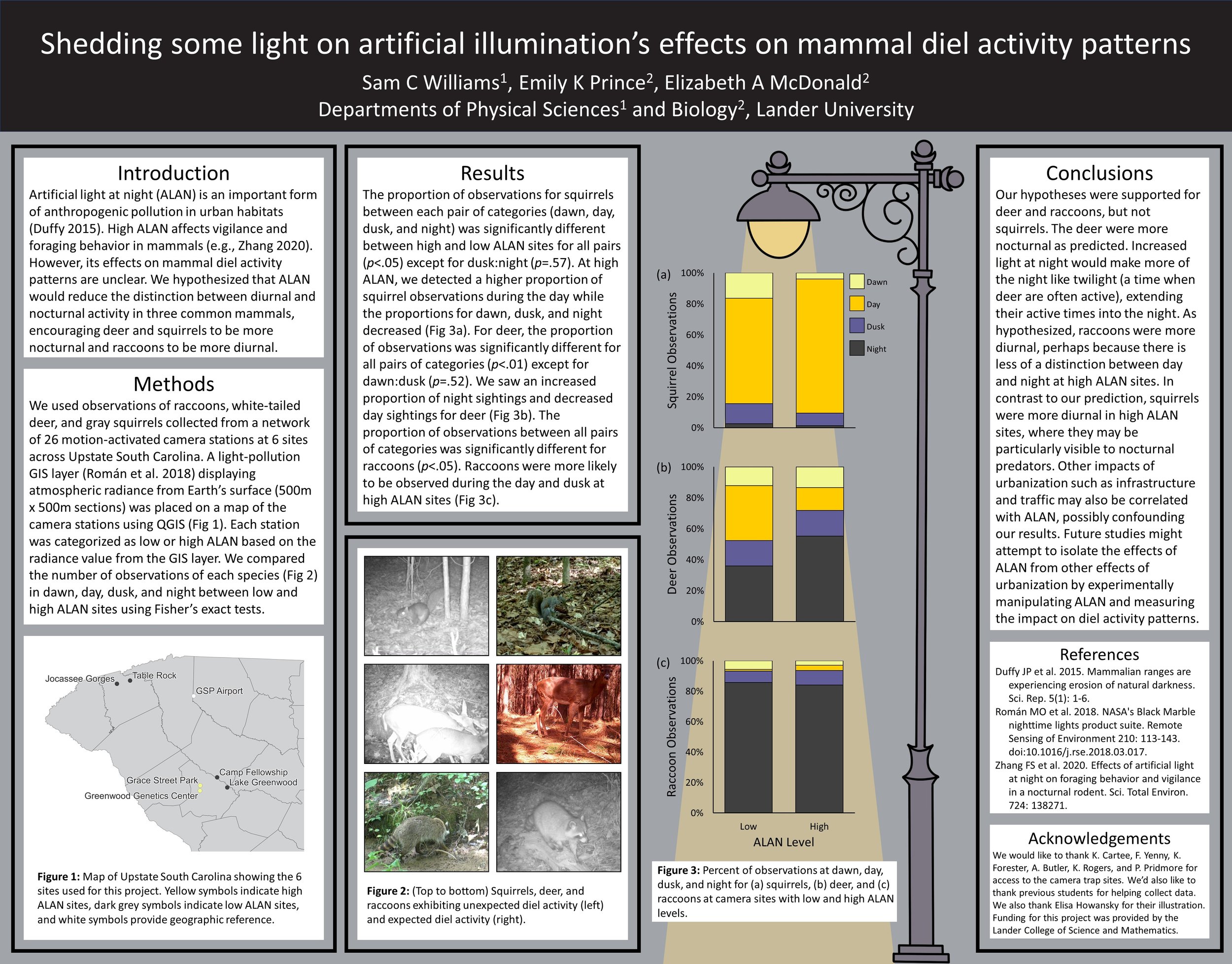Shedding some light on artificial illumination’s effects on mammal diel activity patterns
Sam C Williams
Artificial light at night (ALAN) is an important form of anthropogenic pollution in urban habitats. High ALAN affects vigilance and foraging behavior in mammals. However, the effects of ALAN on mammal diel activity patterns are unclear. We hypothesized that ALAN may reduce the distinction between diurnal and nocturnal activity, resulting in a shift to more cathemeral activity patterns. To test ALAN’s effects on nocturnal and diurnal mammals, we used data collected from a network of 26 motion-activated camera traps at 6 sites across Greenwood, Laurens, and Pickens counties in Upstate South Carolina. A GIS layer for light pollution was placed over a map of the camera traps using QGIS. We measured the radiance value at each camera to categorize each station as low or high ALAN. We compared the number of diurnal and nocturnal observations of raccoons, white-tailed deer, and gray squirrels between sites with low and high ALAN. Raccoons are typically nocturnal, which we observed at the low ALAN stations, but a larger proportion of sightings were during the day at the high ALAN stations. Deer exhibited typical variable activity patterns in low ALAN stations, but the proportion of nighttime sightings was higher at high ALAN stations. Gray squirrels followed the expected diurnal activity pattern at low ALAN stations, however the proportion of sightings in the day was even higher at high ALAN stations. This suggests that our hypothesis was supported for raccoons and deer, but not for gray squirrels. The squirrels may be more active during the day because high ALAN makes them more vulnerable to nocturnal predators. Overall, heightened ALAN levels do shift mammal diel activity patterns, but the direction of the shift is species specific.
Sam Williams is a junior environmental science major and is working on minors in chemistry and biology. He has consistently qualified for the Lander Academic scholarship and was awarded the Environmental Science Discipline Award in 2022. Post-graduation, he plans to become an environmental analyst.
